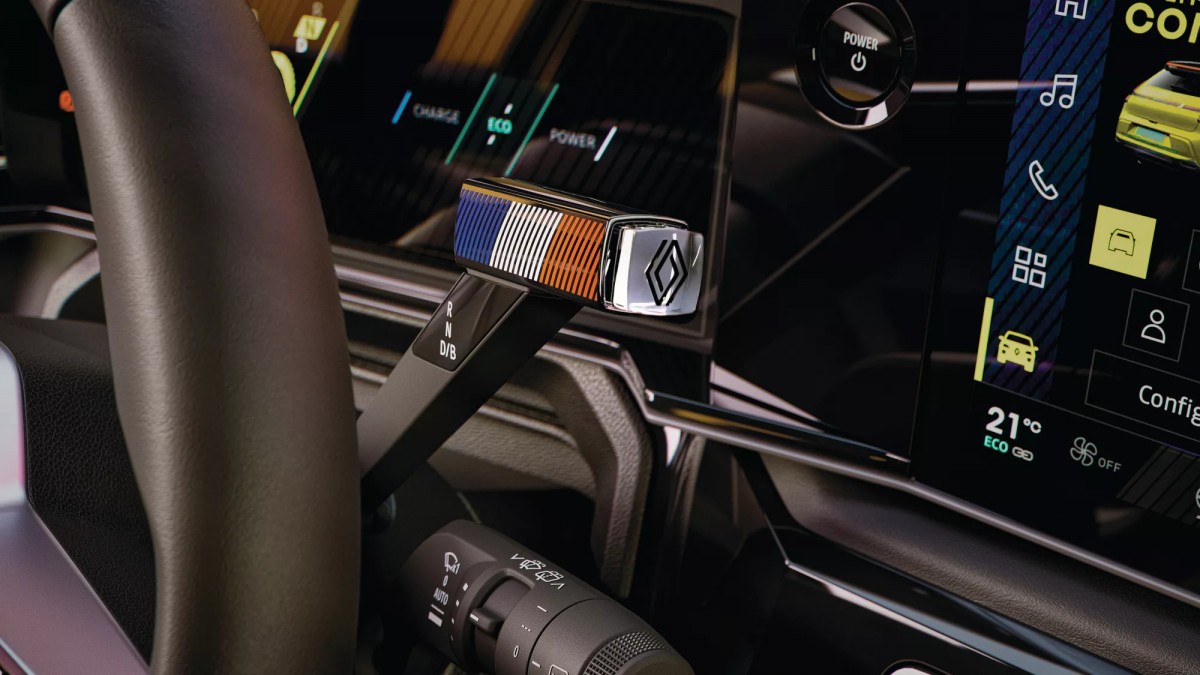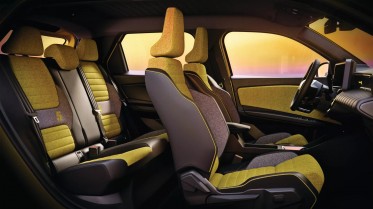Renault 5 E-Tech Electric announced - the €25,000 EV icon to start shipping next year
The original Renault 5 cemented the French maker's reputation as a pioneer. The small, nimble, and affordable car quickly captured the hearts of European drivers, especially those looking for a second car or just entering the new car market. Can its successor, the fully electric Renault 5 E-Tech, repeat that success? On paper, it appears promising.

To say the original Renault 5 was a revolutionary design is an understatement. A sculpted body, bold colors, and almost cheeky headlights gave this little car a big personality that resonated with a generation. It was quite practical too.
Renault is banking on nostalgia with their 21st-century revival. But while the new Renault 5 E-Tech clearly draws inspiration from its predecessor, the design team has skillfully brought back its retro-futuristic style in a way that's relevant to contemporary life. Bright colors, the familiar cheeky headlights, the vertical rear lights, and sculpted wings all pay homage to the original. Even the placement of the charging indicator in the form of the iconic number 5 where the original vent grille used to be, is subtly brilliant.
The new Renault 5 E-Tech packs the latest OpenR Link system with Google integration, over 50 apps, and practical services for electric driving. The "Reno" voice-activated avatar seeks to humanize the interaction between you and the car by responding to spoken requests like scheduling charge times.
The Renault 5 E-Tech promises driving aids (ADAS) usually reserved for more expensive models, like Active Driver Assist and intelligent adaptive cruise control.
The Renault 5 E-Tech utilizes a new platform developed by Ampere, a Renault Group entity specializing in electric vehicles. This platform, called AmpR Small, is specifically for B-segment electric vehicles. Sharing this platform with other future EVs gives Renault cost efficiency while still delivering on features and performance.
There are three electric motor versions coming - 110 kW (150 hp) will be the first on the market. This motor is coupled with the 52 kWh NMC (nickel-manganese-cobalt) battery pack containing 46 cells and weighing in at 661 lb. This version of the Renault 5 tips the scales at 3,194 lb, making it only 97 lb heavier than the much smaller Fiat 500 with the 42 kWh battery.
There are two more options coming a little bit later - 70 kW (95 hp) and 90 kW (120 hp). Both versions will be available with the smaller 40 kWh battery pack that weighs 529 lb, resulting in the R5 weighing only 3,025 lb. For comparison, the Renault Zoe, with the 22 kWh battery weighed nearly 220 lb more, and the cute Fiat 500e ended up being heavier by 73 lb. Making an electric car that’s bigger and yet lighter than its competitors is an achievement that should not be overlooked.
The interior of the new Renault 5 E-Tech Electric is a delightful blend of retro charm and modern tech. The dashboard design playfully references the iconic Renault 5 Turbo with chunky plastic housings for the 10-inch digital instrument cluster and infotainment screen. The seats feature thick, padded inserts reminiscent of classic upholstery, while various trim levels offer unique twists like denim-inspired textiles. Renault has prioritized sustainability, omitting leather and ensuring that a significant percentage of the car's material content is recycled.

When it comes to the all-important issue of driving range, the new Renault 5 promises 249 miles with the larger battery, while the smaller batter should be good enough for 186 miles. These are big numbers for small batteries, and at the moment are only WLTP estimates.
Recharging the all-electric Renault 5 should be a cinch, the versions with smaller batteries support up to 80 kW DC charging, while the cars with the 52 kWh battery can take advantage of 100 kW DC fast charging. Home charging is supported at up to 11 kW and the R5 supports V2L and V2G technologies, turning it into essentially a giant battery bank on wheels.
Charging is simplified through the Renault-backed Mobilize ecosystem. A single card grants drivers access to over 600,000 public charging points and the Plug & Charge feature allows the vehicle to identify itself at compatible DC fast chargers.
Vehicle assembly will take place at the Douai plant in northern France, alongside the Mégane E-Tech. The motors powering the new 5 will be produced at the historic Cleon factory, famous for building engines for the original Renault 5 and other legendary models. Even the batteries will be manufactured in France, with a new Gigafactory opening in Douai in mid-2025, with the entire complex aptly called ElectriCity. Renault's commitment extends further, promising that even components from third-party suppliers will be sourced within 186 miles of the final assembly plant.

Finally - when will it be available, and how much will it cost? Renault is a little vague on those details. While the company still promises the starting price will be $29,300 or even a little bit under, this will apply to the 95 hp model with 40 kWh battery - which won’t be available until late 2025. The launch version we see in the photos is the 150 hp model with the larger battery - how much will it cost? We only know that Renault wants to launch the new 5 in September this year.
The September 2024 launch doesn’t unfortunately translate to immediate deliveries. New Renault 5 buyers will need to practice patience - a lot of patience. Providing the new ElectriCity factory expansion is completed on time, the company wants its new EV icon to go into production around June-July 2025.
 A must-have accessory - baguette basket
A must-have accessory - baguette basket














Facebook
Twitter
Instagram
RSS
Settings
Log in I forgot my password Sign up